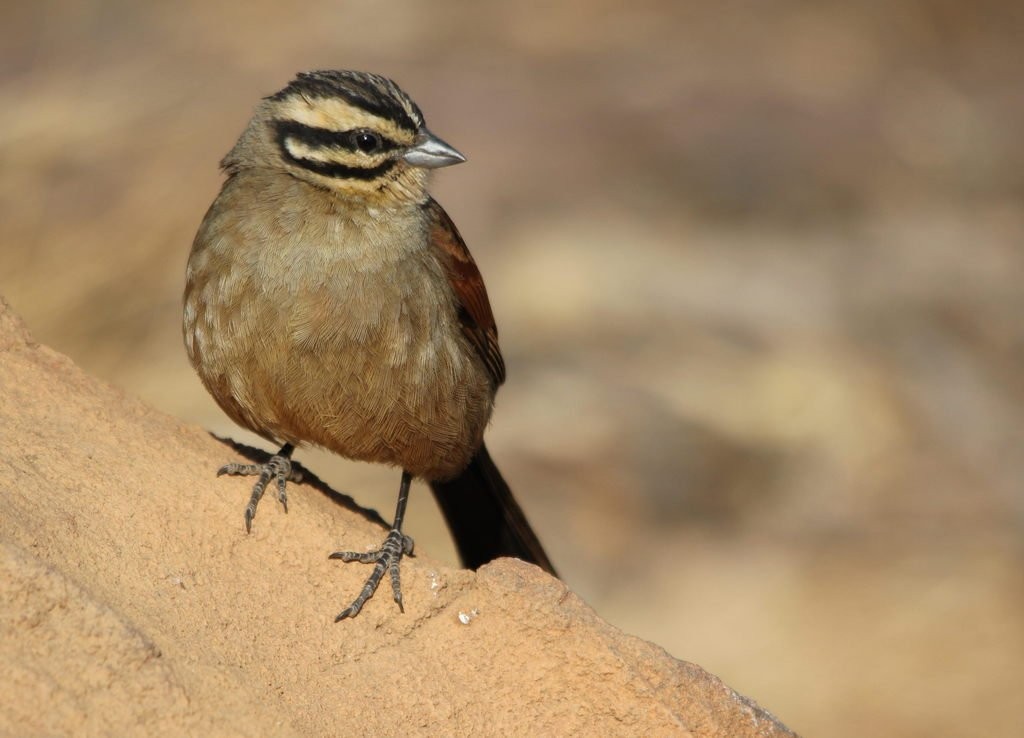Cape Bunting
A species of Old World Buntings Scientific name : Emberiza capensis Genus : Old World Buntings
Cape Bunting, A species of Old World Buntings
Botanical name: Emberiza capensis
Genus: Old World Buntings
Content
Description General Info
Description
The Cape bunting is 16 cm long. The adult has a black crown, white supercilium and black-bordered white ear coverts. The upperparts are grey brown with some dark streaks, and the wing coverts are chestnut. The tail is darker chestnut, and the underparts are grey with a pale throat. The sexes are very similar, but females may have a buff tone to the white head markings. Young birds have duller chestnut wings, a less distinct head pattern, and heavier streaking extending on to the breast and flanks. The call is an ascending zzoo-zeh-zee-zee. The song is a loud chirping chup chup chup chup chee chhep chu. E. c. vincenti has a simple tre-re-ret tre-re-ret song. 
Size
16 cm
Nest Placement
Ground
Feeding Habits
Cape Bunting consumes seeds, green leaves, fallen fruits, and a range of invertebrates like termites and caterpillars. They forage on the ground, often near vegetation, and may scavenge at ant nests or human sites. Cape Bunting is also known to drink and bathe in water sources.
Habitat
The cape Bunting primarily dwells in shrublands, grasslands, and montane regions of southern Africa. This species favors arid, rocky environments with a mix of open and vegetated areas, often in proximity to water. Cape Buntings adapt to altitudes up to 2800 meters, and while they prefer natural settings, they can also populate human-modified areas outside breeding seasons.
Dite type
Granivorous
General Info
Feeding Habits
Bird food type
Behavior
The Cape bunting is not gregarious, and is normally seen alone, in pairs or family groups. It feeds on the ground on seeds, insects and spiders. Its lined cup nest is built low in a shrub or tussock. The two to four eggs are cream and marked with red-brown and lilac. 
Distribution Area
The Cape bunting occurs in southern Africa from south-western Angola, eastern Zambia, Zimbabwe and southern Tanzania to the Cape. Its habitat is rocky slopes and dry weedy scrub, mainly in mountains in the north of its range. It previously utilized stony arid areas with some short grass, but much of this has been lost to ploughing. 
Species Status
Not globally threatened.
Scientific Classification
Phylum
Chordates Class
Birds Order
Perching birds Family
New world sparrows Genus
Old World Buntings Species
Cape Bunting 